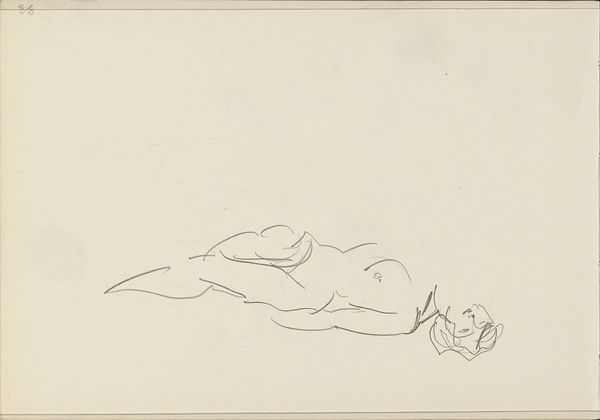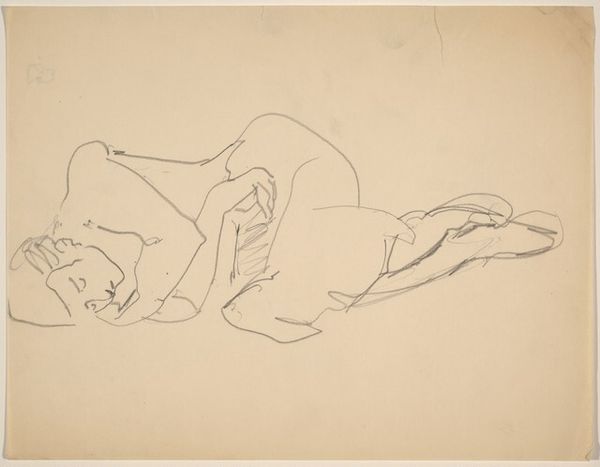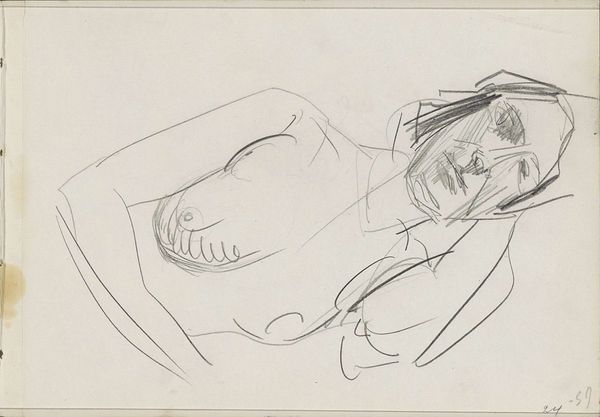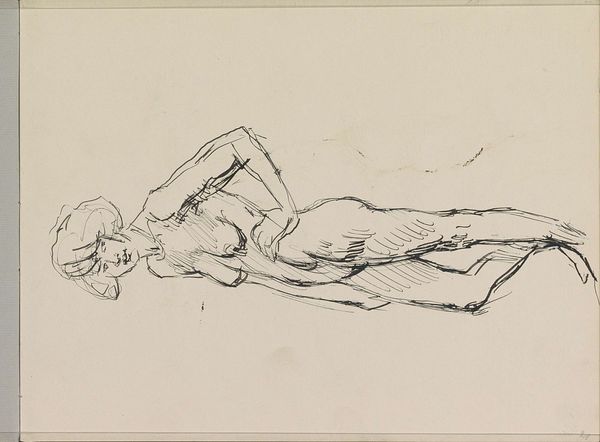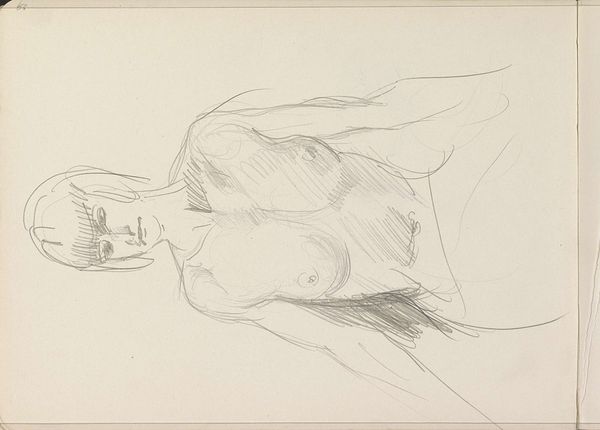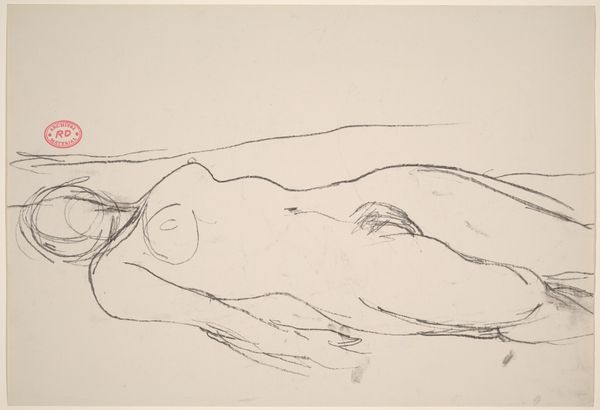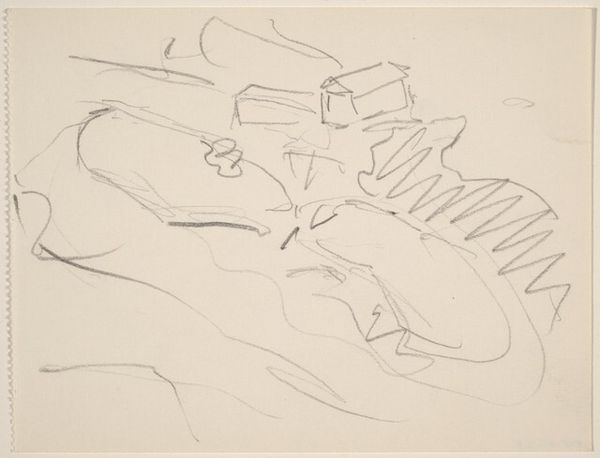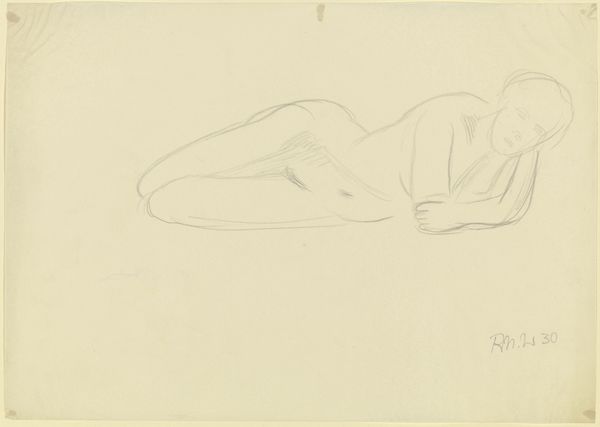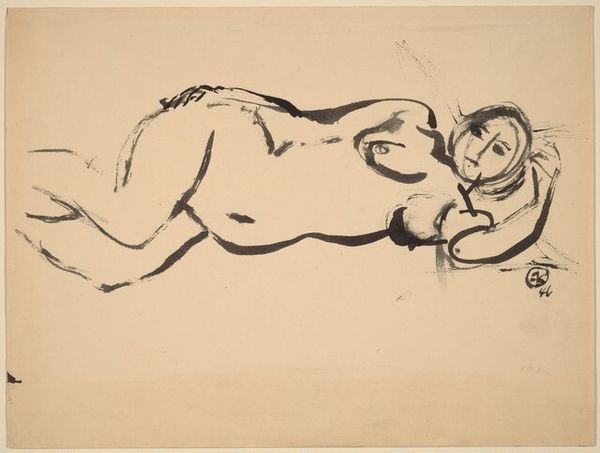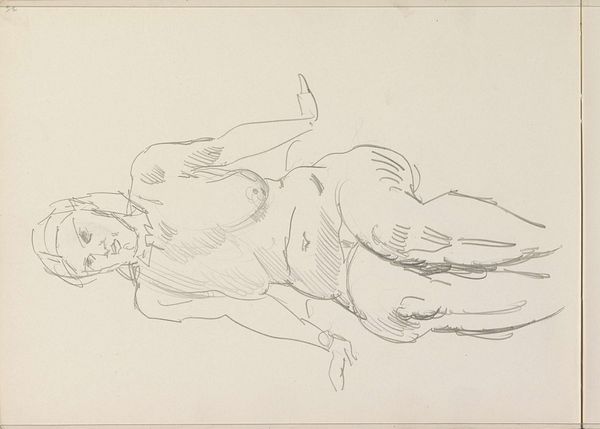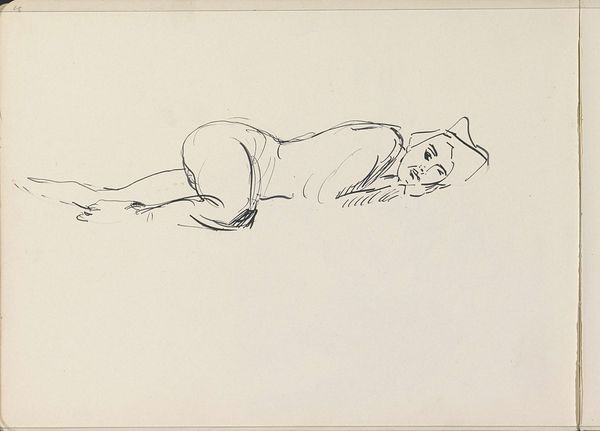
Copyright: Rijks Museum: Open Domain
Editor: This is Isaac Israels's "Sleeping Female Nude," an ink drawing from around the 1910s or 20s at the Rijksmuseum. The lines are so minimal, but it perfectly captures a sense of vulnerability and rest. What do you see in this piece, beyond just the representation of a nude? Curator: It’s interesting you mention vulnerability. Israels, working during a period of evolving social and gender norms, invites us to consider how the female nude was being redefined. Is this simply an objectified form, or does the work explore themes of intimacy and personal space from a woman's perspective? Editor: That's a good point. The intimacy feels almost intrusive, as if we’re not meant to be looking. Does the loose Impressionistic style have anything to do with this feeling? Curator: Absolutely. The sketch-like quality challenges the tradition of highly finished, idealized nudes prevalent in earlier academic art. The quick, almost fleeting lines suggest a captured moment, blurring the lines between private and public. We might also ask ourselves if a male artist can ever truly escape the male gaze when depicting a female nude. Editor: That’s something I struggle with. On one hand, it feels like a celebration of the female form, but on the other, it reinforces a power dynamic. Curator: Precisely. Israels, perhaps unconsciously, highlights these tensions. The lack of detail invites us to project our own interpretations onto the figure, engaging in a dialogue about the complex representation of women in art. What did you think about the composition? Does it add another layer of interpretation to this pen sketch? Editor: The way she curls into herself emphasizes the feeling of interiority that you mentioned before. I guess what struck me about the drawing is not just what it shows, but also what it makes me think about and how much the drawing keeps unfolding, and that this can continue long after one leaves the museum space. Curator: Exactly. The enduring power of art lies in its capacity to spark critical conversations and challenge our preconceived notions, extending far beyond the gallery walls.
Comments
No comments
Be the first to comment and join the conversation on the ultimate creative platform.
